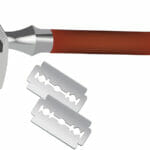Losing a large amount of weight isn’t always a one-way ticket to your dream body. Many Americans who have been struggling with obesity and do manage to lose weight find themselves with an entirely different problem – a lot of loose, excess skin.
While excess skin is not as serious an issue as being morbidly obese – it’s not likely to put your life at risk – it can still cause a lot of problems. Many people left with excess skin also struggle with their body image, sometimes even more than they did before they lost weight.
No one wants to put months or even years of time and effort into losing weight and getting healthy, only to be left with folds of excess skin. Depending on its severity, the skin can also leave you subject to yeast infections, rashes, and back pain. It can also slow weight loss, as it is difficult to be as active as you need when the skin is chafing or rubbing against you. It basically just gets in the way! It can also serve as a painful reminder of the past.
So why does skin hang loose when we lose weight?
Why skin gets loose
Skin doesn’t simply go back to how it was when we lose weight because, depending on how long your obesity problem has lasted, the period of time where it was stretched over your heavier frame caused it to lose elasticity. So when the weight comes off, the skin isn’t able to bounce back and hangs down. If you have only been obese for a short period of time, you may find your skin does return to normal shape. You may also snap back more easily if you are young: as we age, our skin naturally loses elasticity. This can exacerbate the problem for older people.
Gaining or losing weight particularly quickly also makes skin more likely to sag: gaining quickly puts more stress on skin’s elasticity and makes it less likely to pingback, and losing quickly means it simply doesn’t have time to. This means that skin sagging is often an issue for people who have had bariatric surgery to help them lose weight.
Solving the Problem
Minor cases of skin sagging can often be improved by building muscle mass – you simply replace the volume of lost fat from under the skin with muscle, to reduce the overall looseness. Please note that this is only likely to work if you have a very small amount of excess skin.
Compression garments can also help with the discomfort that excess skin causes. They can also help with fitting into clothing, as for many people with large amounts of skin, it can be difficult to find clothes that fit correctly and don’t rub. Wearing a compression garment while you are still in the process of losing weight may also help support your skin as you continue to get smaller. Try out this compression shirt for size.
If you are losing a large amount of weight, there is very little that can be done to prevent skin sagging, but most weight loss surgery patients are given a recommended diet of around 80 grams of protein per day. This can help maintain the appearance of the skin and keep it healthy as skin cells are primarily composed of protein. A high protein diet also helps maintain muscle mass while losing fat.
If you are losing weight, you should also drink plenty of water every day; this will keep your skin hydrated and looking as plump and healthy as possible.
If you do have loose skin, whether you plan to eventually have it removed or not, you will need to take good care of it. Rashes and infections can develop in the folds, so you’ll need to keep it dry with talcum powder to stop it chafing and becoming irritated.
Apart from radio frequency skin tightening treatments there are almost no products which can help you tighten your skin at home. There are so many several so-called ‘miracle’ products out there, but be careful – those creams, wraps, and treatments are unlikely to give you lasting results. There is no miracle product that will get rid of loose skin – you can manage it, or you can have it surgically removed.
The Surgical Route
In the vast majority of cases, the only way to truly get rid of sagging skin is to have it surgically removed. However, only around one in five patients who get weight loss surgery have the procedure – known as body contouring – done. This is often due to the cost, as removing all the skin often requires multiple surgeries and can cost tens of thousands of dollars.
As the procedure is often considered purely cosmetic, it is rarely covered by health insurance, and so patients have to find the cash themselves. It is worth noting that in some cases if there is a risk of infection or the skin is seriously impeding your ability to move, your health insurance provider may cover the cost of removal.
Before going under the knife for skin removal surgery, most doctors will ask you to maintain your lower, healthy weight for at least six months. No surgeon wants to do such a significant surgery on someone who is at risk of regaining their weight. It’s also likely that you’ll need more than one procedure, spread over a period of time to allow you to recover. Stomach, thighs, and arms are among the most common areas for skin removal surgeries.
As with most surgical procedures, you will be left with scarring, and this can be significant. But it’s worth it – better to have a scar than as much as 40lb of excess skin.
Learning to Live With It
That said, not everyone who has excess skin chooses to go under the knife. For some, rather than an unfortunate reminder of their previous weight, the excess skin is the opposite – a reminder that they’ve been through something difficult and come out on the other side. For those with less severe sagging skin, it’s easier to just cover it with clothing or learn to love it than it is to risk getting the surgery. Every case is different, and every patient too.
Image Source: BigStock.com (licensed)
Related Categories: Health, Reviews







